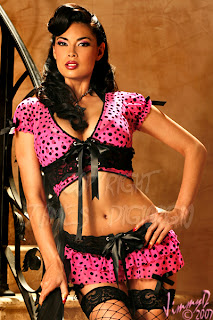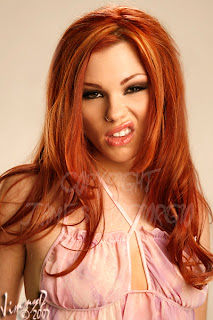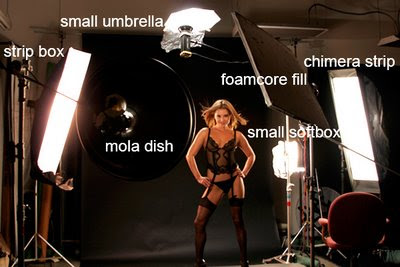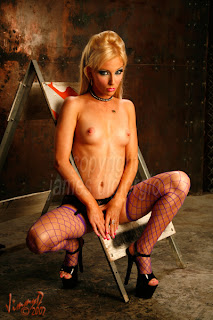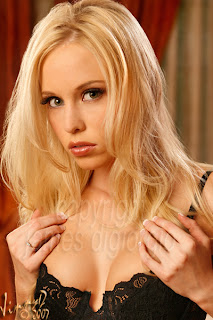 Few other themes in the history of art are as often depicted as the nude, female, form. In fact, some of humankind's very first, artistic, endeavors utilized this theme.
Few other themes in the history of art are as often depicted as the nude, female, form. In fact, some of humankind's very first, artistic, endeavors utilized this theme.A carved limestone figure, the Venus of Willendorf, discovered in 1908, is one of the oldest representations of a female, figure study. And wouldn't ya know it? She's naked!
The figure's age has been dated to somewhere between 24,000 and 22,000 B.C. (That pre-dates the building of the pyramids by about 20,000 or more years!)
Back then, most people on the planet were nomadic, hunter gatherers. Archaeologists and others who study this sort of stuff generally agree the figure is not meant to be an accurate depiction of a woman. Rather, it is thought to be an idealized representation-- most likely, fertility-related. In spite of the figure's corpulent shape, early humankind's nomadic lifestyles and limited diets meant that obesity probably wasn't a big problem amongst our early ancestors.
Things haven't changed much in the past 22 or so millennia: Most photographers who point their cameras at the nude or semi-nude female form still attempt to capture their subjects in idealized and stylized ways. I guess, even back then, many artists found reality a bore, at least when it came to imagery of naked women. It kind of makes me proud, though, to be a practicing craftsman of one of humankind's oldest artistic endeavors. (Not to be confused with humankind's oldest profession.)
As most of you probably know, or should know, fertility and sex are closely aligned subjects. I suppose it's no wonder so many images of women, dressed and undressed, include sex-appeal as it's underlying theme-- sometimes with subtlety and sometimes without. Oh well! As pretty girl shooters, it's how we roll. Thousands and thousands of years of social evolution hasn't much changed our most basic and primal inclinations when capturing the allure and magic of the females of our species, whether on canvas, in sculpture, or through photography. Those who believe creating or capturing artistic, idealized, or stylized images of the nude, female, form is inherently undignified or perverse simply don't understand that we, as artists and craftsmen, are just going with the flow: A flow that started when our most ancient ancestors first began reflecting their world around them in artistic, interpretive, and creative ways.
I often wish I was Mr. Peabody's pet/boy, Sherman, so I could accompany the intrepid, canine-Einstein, via his WABAC machine (pronounced "way back"), through the ages. (Any other Rocky and Bullwinkle fans out there?) Anyway, I'd certainly want to visit artists throughout history, beginning with the earliest of them, to learn and, hopefully, understand (and bring back and share) the wisdom of their artistic craftsmanship. I should also note that, in addition to photography, history and archeology are my next favorite subjects. A trip in the WABAC machine would fulfill some of my wildest fantasies... No! Not those kinds of fantasies! (Well, maybe a few of them... excluding Ms. Venus of Willendorf. She ain't exactly my type.)


